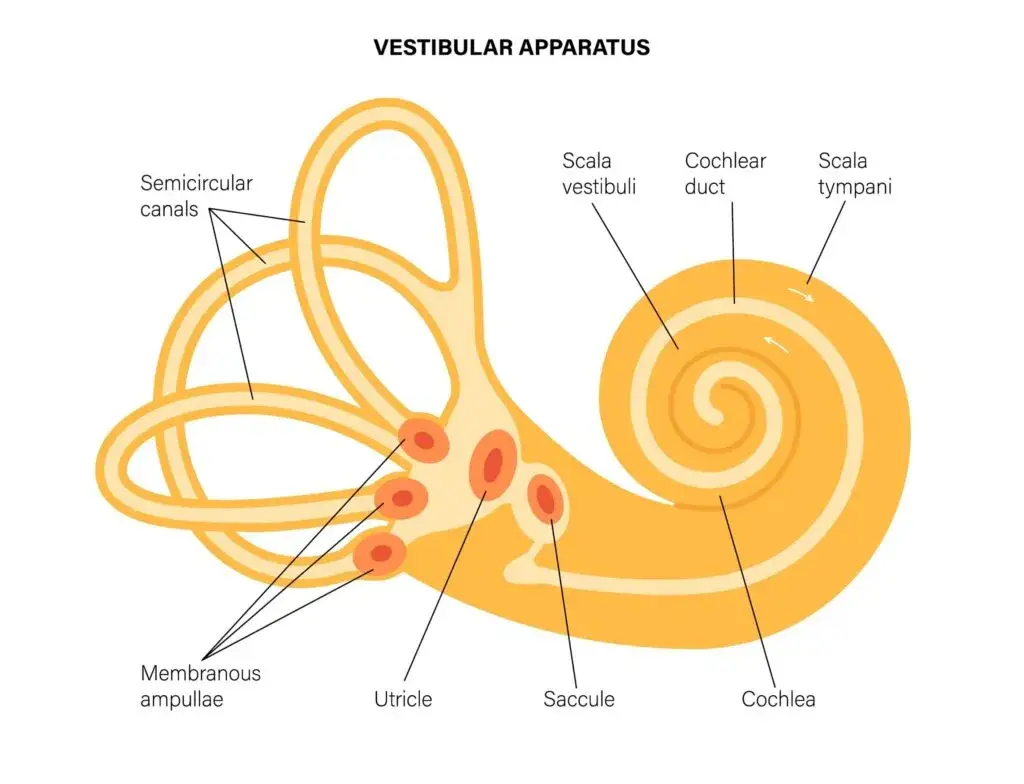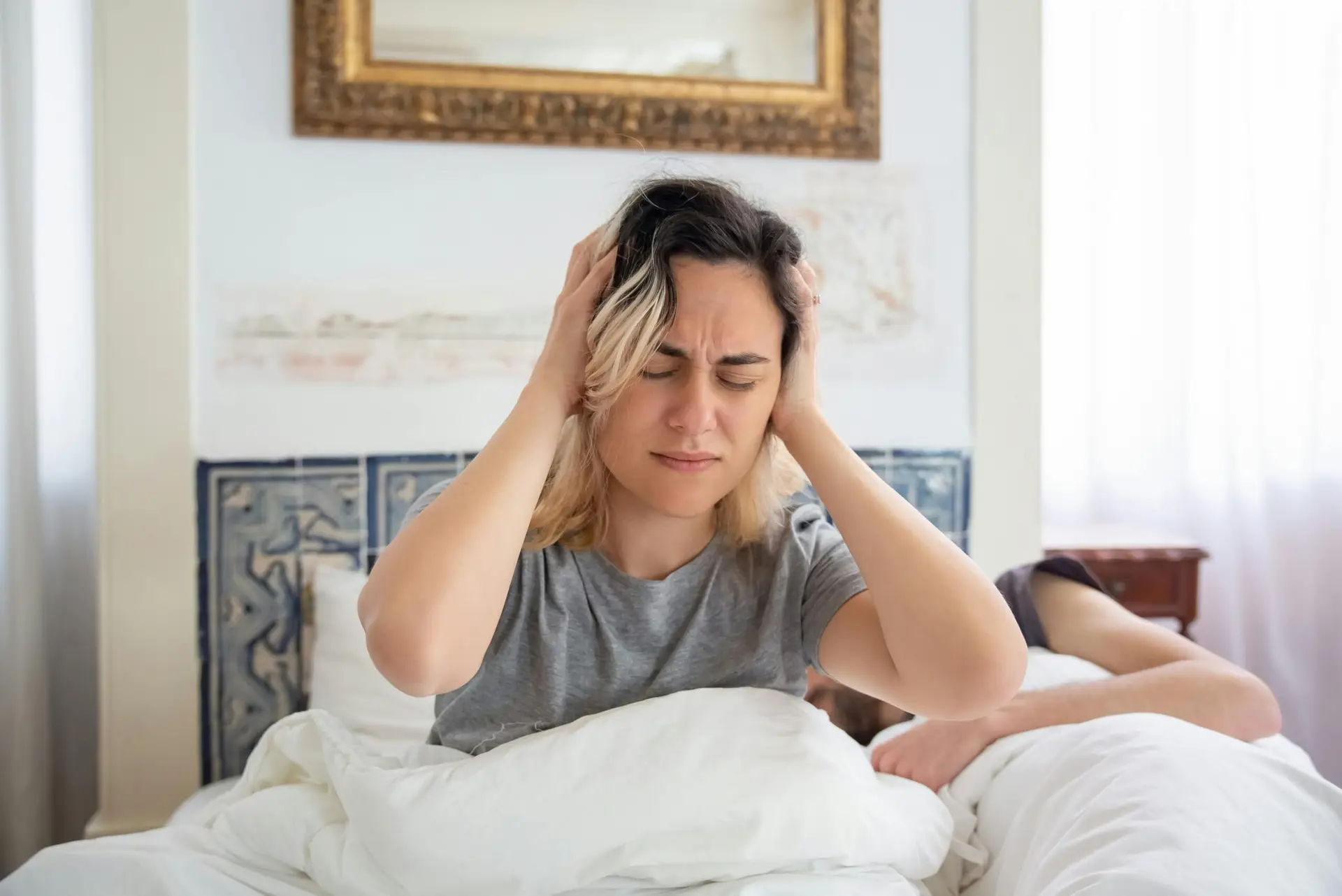
Introduction
Neck pain is one of the most common musculoskeletal complaints in the United States, affecting up to 70% of people at some point in their lives.¹ In Lakewood Ranch, where active lifestyles—from golf and tennis to paddleboarding and jogging—are part of everyday life, chronic neck discomfort can derail weekend plans and even basic daily activities like driving, working at a computer, or sleeping.
If you’re reading this, you’ve likely tried over-the-counter pain medications, perhaps some physical therapy or massage, only to find that relief is temporary and the pain always comes back. You may be wondering: is there a way to fix this once and for all? The answer lies beneath the surface—literally—in the alignment of the upper cervical spine.
At Lavender Family Chiropractic, our mission is to help Lakewood Ranch, Sarasota, Bradenton, Parrish, Ellenton, Venice, Osprey, Punta Gorda, St. Petersburg, Siesta Key, Longboat Key, Lido Key, Myakka City, and beyond rediscover life without neck pain. We combine state-of-the-art diagnostics—3D CBCT imaging, paraspinal infrared thermography, and functional nervous system scans—with gentle, precise upper cervical chiropractic adjustments to address the root cause of your discomfort. Rather than masking symptoms, we correct the structural and neurological imbalances that underlie chronic neck pain, providing long-term relief and improved overall health.
In this comprehensive guide, you’ll learn:
- Why traditional approaches often fail
- The unique benefits of upper cervical chiropractic care
- How advanced diagnostics pinpoint the exact misalignment
- Personalized treatment protocols and care plans
- In-depth case studies of patients just like you
- Research evidence supporting our methods
- Lifestyle, ergonomic, and exercise recommendations
- Nutritional strategies for spinal health
- A deeper dive into our Top 15 FAQs
By the end, you’ll understand why Lavender Family Chiropractic is recognized as the premier chiropractor in Sarasota, Florida, and how you can take the first step toward a pain-free life. Let’s get started.
1. Why Traditional Approaches Often Fail
1.1 Symptom Suppression vs. Root-Cause Resolution
Most people turn first to pain medications—NSAIDs like ibuprofen or topical analgesics. While these can dull discomfort, they do nothing to correct the underlying structural issues. Steroid injections or muscle relaxants may provide temporary relief, but they carry potential side effects when used long term (e.g., gastrointestinal upset, sleepiness, or weakening of soft tissues).²
Physical therapy and massage address muscular tension and improve range of motion, yet if the underlying joint misalignment remains uncorrected, the muscles will continually re-tighten, leading to a cycle of pain. Likewise, cervical traction or inversion tables may momentarily decompress the spine, but without proper alignment of the atlas and axis, any decompression is fleeting.
1.2 The Hidden Culprit: Upper Cervical Misalignment
The atlas (C1) and axis (C2) are the two topmost vertebrae that connect your skull to your spine. Because of their unique anatomy and the fact that they bear the weight of your head (which on average weighs 10–12 pounds³), even a slight misalignment—measured in fractions of a millimeter—can cause:
- Muscular compensation: Surrounding muscles tighten to protect the misaligned joint.
- Nerve irritation: Pressure on nerve roots or the brainstem can disrupt communication to muscles and organs.
- Altered cerebrospinal fluid (CSF) flow: Affecting neurological function and potentially leading to headaches or brain fog.
These biomechanical and neurological disturbances often manifest as neck stiffness, chronic ache, sharp pains, headaches, dizziness, and even TMJ discomfort.
1.3 Why “Pop and Crack” Isn’t Enough
While many people have experienced “traditional” chiropractic adjustments that involve high-velocity thrusts and audible “pops,” upper cervical care is fundamentally different. It does not rely on forceful twisting or cracking of the neck. Instead, it uses precise contact points and gentle leverage to realign C1 and C2 without discomfort. This precision is crucial because the upper cervical spine houses the brainstem and vertebral arteries; even minor shifts can have outsized effects on health and well-being.
2. The Unique Benefits of Upper Cervical Chiropractic Care
Upper cervical chiropractic focuses solely on the atlas and axis, using specialized techniques that emphasize safety, accuracy, and long-term stability. Benefits include:
- Precision Realignment
- Adjustments are based on detailed measurements from 3D imaging and thermography scans, ensuring we correct the exact vectors of misalignment.
- The gentle nature of the technique makes it suitable for all ages, from children to seniors, and those with acute or chronic conditions.
- Neurological Optimization
- By relieving pressure on the brainstem and spinal cord, upper cervical care enhances autonomic nervous system balance.
- Improved nerve flow translates into better muscle coordination, immune function, and overall vitality.
- Lasting Stability
- Once proper alignment is restored, the body’s proprioceptive and muscular systems adapt to maintain that alignment, reducing the frequency of visits over time.
- Many patients report lasting relief after a short series of adjustments, compared to indefinite therapy or pain management regimens.
- Comprehensive Symptom Relief
- Beyond neck pain, patients often experience improvements in headaches, migraines, vertigo, TMJ, chronic fatigue, fibromyalgia, POTS symptoms, and post-concussion syndrome.
- Because the brainstem governs hundreds of bodily functions, correcting its alignment can have far-reaching benefits.
3. Advanced Diagnostic Tools: Pinpointing Misalignments
Before any adjustment, we perform a thorough assessment using cutting-edge technology. This ensures your treatment is based on objective data rather than guesswork.
3.1 3D CBCT X-Ray Imaging
- High-Resolution 3D Views: Unlike traditional two-dimensional X-rays, CBCT (Cone Beam Computed Tomography) provides a three-dimensional reconstruction of your cervical spine.
- Submillimeter Accuracy: Detects angular and rotational misalignments often missed by standard films.
- Guided Adjustments: The images inform the exact direction, angle, and force required for your adjustment.
3.2 Paraspinal Infrared Thermography
- Heat Differential Mapping: Measures skin temperature along the paraspinal muscles. Areas of inflammation will show as warmer zones, indicating underlying joint or nerve irritation.
- Pre- and Post-Adjustment Comparison: Thermography allows us to visualize immediate changes in inflammatory patterns, confirming the efficacy of the adjustment.
3.3 Functional Nervous System Scans
- Autonomic Balance Assessment: Heart Rate Variability (HRV) testing gauges the balance between your sympathetic (“fight or flight”) and parasympathetic (“rest and digest”) systems.
- Objective Progress Tracking: Improved HRV readings over time correlate with better stress resilience, sleep quality, and overall healing.
4. Personalized Treatment Protocols
Every patient’s care plan is unique, but most follow a similar progression:
4.1 Initial Phase: Correction
- Frequency: 2–3 visits per week for 4–6 weeks.
- Goal: Restore proper atlas/axis alignment.
- Components:
- Precise upper cervical adjustments.
- Weekly CBCT or thermography scans to monitor progress.
- Neurological reassessments via HRV.
4.2 Stabilization Phase
- Frequency: 1 visit per week for 4–8 weeks.
- Goal: Reinforce and stabilize the corrected alignment.
- Components:
- Adjustments as needed based on follow-up imaging.
- Introduction of therapeutic exercises to strengthen deep neck flexors and postural muscles.
- Ergonomic coaching for workstation and sleep environment.
4.3 Wellness Phase
- Frequency: 1–2 visits per month, tapering to diagnostic checks every 3–6 months.
- Goal: Maintain alignment, prevent recurrence, and support overall health.
- Components:
- Periodic CBCT/thermography to confirm continued alignment.
- Lifestyle support including stress management, nutrition, and exercise guidance.
5. In-Depth Case Studies
5.1 Case Study: Weekend Golfer with Chronic Stiffness
Patient: 56-year-old male, avid golfer, 6-month history of neck stiffness and occasional headaches.
Presentation: Limited cervical rotation, right-sided tightness, headaches peaking at 5/10 severity.
Diagnostics: CBCT revealed a 2.3° rotation of C1 to the right; thermography showed inflammation at C1–C3 paraspinals.
Treatment: Six upper cervical adjustments over 3 weeks, combined with cervical strengthening exercises.
Outcome: Full cervical range of motion restored, headaches resolved, golf swing improved. At 6-month follow-up, patient required only one maintenance visit.
5.2 Case Study: Post-Concussion Syndrome with Neck Pain
Patient: 28-year-old female, history of concussion 18 months prior, persistent neck pain (7/10), brain fog, dizziness.
Presentation: Forward head posture, tenderness over C1–C2, HRV indicated sympathetic dominance (low parasympathetic tone).
Diagnostics: CBCT showed 3.1 mm anterior translation of C1; HRV low beat-to-beat variability.
Treatment: Eight adjustments over 6 weeks, vestibular rehabilitation exercises, HRV coaching (breathing techniques).
Outcome: Neck pain reduced to 1/10, dizziness episodes decreased by 90%, HRV normalized. At 3-month check, patient reported full return to work and recreational activities.
6. Research Evidence Supporting Upper Cervical Care
- Hypertension Study: A landmark 2007 randomized trial found that upper cervical adjustments reduced both systolic and diastolic blood pressure by an average of 14 mmHg and 8 mmHg, respectively—comparable to two-drug therapy—sustained at 8 weeks.⁴
- Migraine Reduction: A 2014 pilot study showed that patients with chronic migraine experienced a 68% reduction in headache frequency after seven upper cervical chiropractic sessions.⁵
- Post-Concussion Improvement: Emerging evidence suggests that correcting upper cervical misalignments in post-concussion patients can alleviate cognitive symptoms, improve balance, and reduce headache intensity.⁶
These studies underscore how precise alignment of the atlas and axis can positively impact cardiovascular regulation, pain modulation, and neurological function.
7. Lifestyle, Ergonomic, and Exercise Recommendations
7.1 Ergonomic Strategies
- Workstation Setup:
- Monitor at eye level, approximately an arm’s length away.
- Keyboard and mouse positioned to keep wrists neutral and elbows at 90°.
- Chair with lumbar support, hips slightly above knees, feet flat.
- Frequent Micro-breaks:
- Every 30 minutes, stand, stretch neck side-to-side and forward/backward for 30 seconds.
- Shoulder rolls and chin tucks to counteract forward head posture.
7.2 Therapeutic Exercises
- Deep Neck Flexor Activation:
- Lie on your back, tuck chin gently, and hold for 10 seconds. Repeat 10 times.
- Scapular Retraction:
- Seated or standing, squeeze shoulder blades together and hold for 5 seconds; 3 sets of 10.
- Levator Scapulae Stretch:
- Gently rotate head 45° to one side, then tilt chin toward chest; hold 30 seconds each side.
7.3 Stress Management
- Diaphragmatic Breathing:
- Inhale deeply through nose for 4 counts, exhale through mouth for 6 counts; repeat 10 breaths.
- Guided Meditation:
- 5–10 minutes daily using apps or YouTube for progressive muscle relaxation.
- Yoga and Tai Chi:
- Focus on gentle neck and shoulder openers like cat-cow, child’s pose with side stretch, and neck circles.
8. Nutritional Strategies for Spinal Health
8.1 Anti-Inflammatory Diet
- Omega-3 Fatty Acids:
- Fatty fish (salmon, mackerel), flaxseeds, chia seeds—help reduce systemic inflammation.
- Antioxidant-Rich Produce:
- Berries, leafy greens, bell peppers—to combat oxidative stress in joint tissues.
- Whole Grains and Legumes:
- Quinoa, brown rice, lentils—for steady energy and glycemic control.
8.2 Key Supplements
- Magnesium:
- Supports muscle relaxation and nerve function; 200–400 mg nightly.
- Vitamin D:
- Essential for bone health and immune modulation; check levels and supplement as needed.
- Collagen Peptides:
- Provide amino acids for connective tissue repair; 10–20 g daily in smoothies or water.
8.3 Hydration
- Water Intake:
- Aim for at least half your body weight in ounces per day (e.g., 150 lb → 75 oz).
- Herbal Teas:
- Ginger or turmeric tea for additional anti-inflammatory benefits.
9. Deeper Dive: Top 15 FAQs About Resolving Neck Pain with Upper Cervical Chiropractic
Below are expanded answers to our most common questions, offering more detail and actionable insights.
- What causes neck pain in Lakewood Ranch residents?
- Beyond common culprits like whiplash and poor posture, Lakewood Ranch’s warm climate encourages long hours on mobile devices outdoors—often with neck flexion. Humidity can exacerbate muscle tension, while water sports (e.g., paddleboarding) can lead to overextension injuries. Proper diagnosis is key to distinguishing muscular discomfort from joint misalignment.
- How can an upper cervical chiropractor help my neck pain?
- Unlike general chiropractic that may adjust multiple spinal levels, upper cervical care zeroes in on C1 and C2. This targeted approach stabilizes the entire spine because the atlas and axis serve as the keystone for head posture and vertebral alignment.
- Is upper cervical chiropractic safe for all ages?
- Yes. Our gentle techniques use minimal force—often no more than the weight of a nickel. Children, pregnant women, seniors, and patients with osteoporosis or arthritis can safely receive care after a thorough evaluation.
- What can I expect during my first visit?
- A comprehensive intake covers health history, lifestyle factors (sleep habits, occupation, recreational activities), and previous imaging. We then perform 3D CBCT scans, thermography, and HRV testing. After reviewing the data, your doctor explains the findings and outlines a step-by-step care plan.
- Will adjustments hurt?
- Most patients feel a gentle pressure or sense of release. Unlike cracking techniques, upper cervical adjustments are comfortable and rarely provoke soreness.
- How many visits will I need?
- While many see significant relief within 4–6 visits, severe or long-standing cases may require 8–12. We never force a set timeline—instead, we follow your individual progress as shown on follow-up scans and reported symptom relief.
- Do you accept insurance?
- Our office is out of network with insurance. Many patients obtain superbills to submit for reimbursement. We also offer flexible payment plans and third-party financing to make care accessible.
- What technology do you use to diagnose neck misalignments?
- We combine 3D CBCT imaging (for bony alignment), paraspinal infrared thermography (to detect inflammation), and functional nervous system scans (to assess autonomic balance), ensuring a multi-modal, objective assessment.
- Can upper cervical care help with headaches and migraines?
- Yes—by removing interference at the brainstem, patients often report reduced headache intensity, fewer migraine days, and improved neck mobility, which further prevents trigger events.
- I’ve tried physical therapy—how is this different?
- Physical therapy strengthens supportive musculature but does not correct joint misalignments. Upper cervical adjustments realign the spine, allowing muscles to release tension and function optimally.
- Do you treat conditions beyond neck pain?
- Absolutely. We address vertigo, TMJ dysfunction, fibromyalgia, chronic fatigue, POTS, trigeminal neuralgia, occipital neuralgia, post-concussion syndrome, and more—because many of these conditions are linked to upper cervical instability.
- What should I wear to my appointment?
- Comfortable, non-restrictive clothing (e.g., athletic wear or soft cotton). Avoid scarves or bulky jewelry. We’ll ask you to remove glasses or hair accessories for clear imaging.
- How do I prevent neck pain from returning?
- Consistent home exercises, ergonomic workstation setup, seasonal tune-up visits, and adherence to nutritional guidelines form the cornerstone of long-term prevention.
- Why is Lakewood Ranch posture so prone to neck issues?
- Our region’s outdoor, tech-driven lifestyle leads to a unique combination of forward head posture (looking down at devices) and repetitive overhead activities (e.g., tennis or gardening), creating a perfect storm for cervical strain.
- How do I book an appointment?
- Visit www.chiropractorsarasotaflorida.com or call (941) 243-3729. We’re your go-to “chiropractor near me,” “upper cervical chiropractor near me,” “Vertigo doctor near me,” and “Migraine doctor near me” in Lakewood Ranch, Sarasota, Bradenton, and beyond.
10. Why Lavender Family Chiropractic Is Your Best Choice
- Recognized Expertise
- Voted the leading upper cervical chiropractic office in Sarasota, Lakewood Ranch, and Bradenton. Our doctors—Dr. Rusty Lavender, Dr. Jacob Temple, and Dr. Will Guzinski—bring decades of combined experience and advanced certification in upper cervical techniques.
- Comprehensive Diagnostics
- We’re the only practice in the region offering the trifecta of 3D CBCT imaging, paraspinal infrared thermography, and functional nervous system scans, giving you the clearest picture of your spinal health.
- Gentle, Precise Care
- No twisting, no popping—just accurate, comfortable adjustments that respect your body’s unique structure.
- Wide Service Area
- Proudly serving Lakewood Ranch, Sarasota, Bradenton, Parrish, Ellenton, Venice, Osprey, Punta Gorda, St. Petersburg, Siesta Key, Longboat Key, Lido Key, and Myakka City. Wherever you are, relief is within reach.
- Patient-Focused Experience
- From your first call to ongoing wellness visits, we provide a supportive, family-friendly environment. Our team guides you at every step, answering questions and ensuring you feel confident in your care.
- Convenient Scheduling & Financing
- Online booking, evening and weekend hours, superbill insurance reimbursement, and flexible payment plans make it easy to prioritize your health.
Conclusion & Call to Action
Neck pain doesn’t have to be a life sentence. With precise, data-driven upper cervical chiropractic care at Lavender Family Chiropractic, you can:
- Correct the underlying misalignment driving your discomfort
- Restore proper nerve function and autonomic balance
- Experience lasting relief from neck pain, headaches, vertigo, and more
- Optimize your posture, performance, and overall well-being
Ready to take the first step toward a pain-free life?
Don’t let neck pain hold you back another day. Join the hundreds of Lakewood Ranch residents who have found freedom through upper cervical chiropractic. Contact Lavender Family Chiropractic now and reclaim your life without limits!
Schedule With Us!
Lavender Family Chiropractic in Sarasota Florida offers complimentary consultations to learn more about you. Click the link below!
https://intake.chirohd.com/new-patient-scheduling/724/lavender-family-chiropractic
Visit our Website!
To learn more about us go to http://www.chiropractorsarasotaflorida.com
We also service Bradenton, Parrish, Ellenton, Ruskin, Venice, Tampa, St. Pete, Osprey, Longboat, Lakewood Ranch, Myakka City.
If you are not local, visit www.uccnearme.com to find a doctor in your area!
References
- Côté P, Wong JJ, Sutton D, et al. The prevalence of neck pain in the pain-free population: systematic review and meta-analysis. Spine J. 2018;18(5):754–764.
- Grosser T, Smyth E. An overview of NSAID mechanisms of action and considerations in the management of patients with osteoarthritis. Osteoarthritis Cartilage. 2016;24 Suppl 1:S6–S11.
- Wang Q, Li G, Li C. Biomechanical analysis of head weight distribution and cervical spine load. J Biomech Eng. 2017;139(7):071005.
- Bakris G, Dickholtz M Jr, Meyer P Jr, et al. Atlas vertebra realignment and achievement of arterial pressure goal in hypertensive patients: a randomized controlled trial. J Hum Hypertens. 2007;21(8):671–678.
- Day JA, Bogart A. Efficacy of atlanto-occipital adjustment in the management of chronic migraine: a pilot study. J Manipulative Physiol Ther. 2014;37(6):395–403.
- Kaeser M, Cassidy JD. Upper cervical chiropractic care improves post-concussion syndrome: a case series. J Altern Complement Med. 2019;25(5):536–542.
Lavender Family Chiropractic – Your Lakewood Ranch “chiropractor Sarasota Florida” and “upper cervical chiropractor near me” for resolving neck pain at its root.





